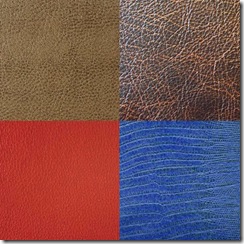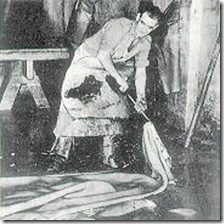 In today’s fast-moving world, tomorrow’s technology is yesterday’s news. That state-of-the-art, brand-spanikin’ new computer you bought last week? It’s already obsolete. That groundbreaking phone you waited three days in line to get on launch day? They just announced a newer, even more groundbreaking version of it due out next month.
In today’s fast-moving world, tomorrow’s technology is yesterday’s news. That state-of-the-art, brand-spanikin’ new computer you bought last week? It’s already obsolete. That groundbreaking phone you waited three days in line to get on launch day? They just announced a newer, even more groundbreaking version of it due out next month.
We are living in a time when technology is expanding at a mind-blowing rate, and it’s hard to keep up with the latest trends. That’s why it’s nice to know there are some things that can stand the test of time without ever really changing. One of those things is leather.
When it comes to luxury, few things are more well known than leather. You see it everywhere: Handbags, shoes, coats, wallets, and, yes, furniture. Today, leather is as much a status symbol as it is a quality material. In this respect, leather defies the logic of current trends; instead of depreciating, leather has managed to become more valuable and prestigious over time. Pretty ironic considering the material’s humble roots…
 The first use of leather practically dates back to the origin of man himself. Animal skins gathered from hunting were commonly used to make clothing and shelter. However, these raw skins weren’t very reliable, becoming stiff in cold temperatures, and rotting in hot temperatures. Unless something could be done to make these skins more durable, the survival of mankind was uncertain at best.
The first use of leather practically dates back to the origin of man himself. Animal skins gathered from hunting were commonly used to make clothing and shelter. However, these raw skins weren’t very reliable, becoming stiff in cold temperatures, and rotting in hot temperatures. Unless something could be done to make these skins more durable, the survival of mankind was uncertain at best.
Luckily, our ancestors were ingenious enough to stumble upon tanning, the process of converting skins and hides into leather (hence the intimidating cowboy portent, “I’m going to tan your hide!”). Leather proved to be more flexible and durable than raw skin, and it lasted longer, too.
Several tanning methods were developed throughout the ages. The oldest, most rudimentary method involved rubbing oils and animal fats onto the skin to make it more flexible. Another was smoking, which was simply the burning of branches and green leaves. Drying skin by using salt or exposing it to the sun proved effective in stopping its decay, leading to huge advancements in tanning methods. Refinements to these techniques allowed for more versatile uses of leather. Ancient texts reveal that leather was used in everything from shoes and dresses to shields and harnesses. One account even describes a working system of leather-made water pipes!

Despite these innovations, the tanning process still took a long time to complete – typically eight months to a year! The discovery of the tanning properties of chrome salts drastically reduced the tanning process to just a few days.
A typical tanning process consists of four basic steps:
-
Before tanning, the hides and skins are thoroughly cleaned. Special techniques are used to remove hairs, fat cells, and other elements that are not suitable for the manufacturing of leather.
-
The hides and skins are tanned. Modern tanning methods utilize either chromium or vegetable oil extracts for efficiency and quality retention.
-
A “wet finish” is applied to the leather. This process determines several leather properties, including softness, color, and malleability.
-
The final leather finish is applied. This finish determines the leather’s final appearance such as glossiness and feel.
The fascinating thing about modern-day leather-making is that, aside from a handful of tools and chemicals, the fundamental process of transforming raw skin into leather has remained unchanged since its inception thousands of years ago.
Tune in next week for an in-depth look at the different types of leather and what they mean to you. In the meantime, be sure to check out www.ElDoradoFurniture.com to browse our huge selection of leather products!
Narratives are for entertainment purposes only and frequently employ literary point of view; the narratives do not necessarily reflect the opinions of El Dorado Furniture, its officers, or employees.
Have a comment or topic suggestion for the author? Shoot him an e-mail at vcapo@eldoradofurniture.com.
Sources:“History of Leather” Leather Resource Website, http://www.leatherresource.com/history.html (accessed June 29, 2010).
“Characteristics of Leather” LANXESS Leather Website, http://www.lanxessleather.com/lea/en/basics/raw_hides_and_skins/characteristics_of_leather/ (accessed June 29, 2010).

